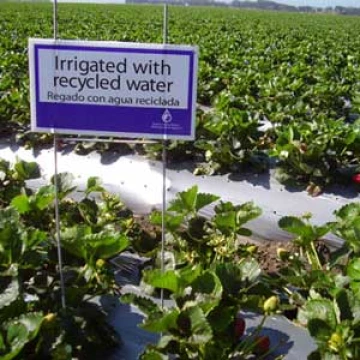by Anthony Batchelder, Graduate Student, University of Arizona Department of Agricultural Economics

Conserving water and using it efficiently. Can there really be money in that? Communities are often motivated to conserve water for hydrological and environmental benefits such as groundwater recharge or environmental restoration, including reintroduction of animal populations, yet the economic benefits of water conservation and improvements in water use efficiency can be a potent motivator. Many economic benefits can be achieved from conserving water and being more efficient with its use. Consider the various industries involved in certain water conservation strategies, including storm runoff retention (which contributes to aquifer recharge), passive and active rainwater harvesting, and re-use of treated wastewater. If communities are pro-active and utilize more of these systems, the economic benefit would be an increase in jobs within these industries, as products need to be produced and facilities need to be maintained. In addition, the labor needed to implement these strategies would require local contractors, which would also benefit the local economy.
A lack of water conservation can also have economic costs. The Pacific Institute reported that the inability to use hydroelectric power and the increased dependence on fossil fuel plants in California caused an increase in electricity costs of over $2 billion from October 2011-September 2015. This amounted to a 1.3-percent increase in costs to the average household. With conservation and more efficient water use, communities can increase the river flow and increase their ability to use hydroelectric power, which is one of the cheapest energy sources according to the Pacific Institute, and cleaner than the alternative, natural gas. Conservation and efficient use of water can have an impact on consumers and the economy via jobs and cheaper, cleaner energy.
The economic benefits of water conservation can also be observed within the agricultural industry, which accounts for approximately 80 percent of the nation’s consumptive water use. Many people in the agricultural industry already understand these benefits. The Imperial Irrigation District in California saw water use drop by 20 percent in the first decade of the 2000s, and simultaneously saw an increase in farm incomes of 30 percent.
To inspire conservation from the agricultural industry and incentivize increased water efficiency, opportunities have been created for farmers to trade their water as they did in the two cases of Oregon’s Whychus Creek and Scott River Water Trust. In Oregon, one farming family was able to transfer some of their water from their farm back to in-stream flow, for which they received $400,000 from environmental groups. This allowed the family to purchase a more efficient irrigation system, which in turn generated water savings in the same amount that was transferred as part of the agreement. These transfers of water from agriculture to in-stream flow have helped restore fish populations and have also provided farmers the resources to purchase more efficient irrigation systems, allowing them to conserve water and receive compensation for keeping their water in-stream.
In the communities surrounding the Scott River in Siskiyou County in northern California, the salmon fishing industry was shut down in 2008 owing to a lack of sufficient flow in the Scott River. The fishery closure caused the California salmon industry to lose $255 million annually in 2008 and 2009, and the survival of the river’s entire adult salmon population was at risk. Environmentalists worked together with local farmers to decrease agricultural diversions, which provided a sufficient amount of water in-stream to allow the adult Coho salmon population to regenerate: adult salmon numbers grew from 62 in 2008 to 340 in 2011. As the salmon population continues to grow, the opportunity for economic recovery of the salmon industry also increases. If proactive conservation had been implemented, the negative economic impact on California’s salmon industry could have been avoided.
It is important for communities to recognize that costs may be incurred by failing to conserve and efficiently use water, but with pro-active water conservation and efficient water use comes the opportunity for economic benefits and growth. Conservation and efficient water use can have strong positive economic impacts, and the examples discussed in this article are only a few of the possibilities.
Studies Confirm Conservation Lowers Water Rates
According to new research from two Arizona communities, water conservation helps keep water rates lower than they would otherwise be. The Alliance for Water Efficiency released the studies by the Town of Gilbert and the City of Tucson on costs avoided by conservation and water efficiency. The Tucson Avoided Cost Analysis clearly and convincingly debunks the myth that conservation drives up water rates by examining the overall impact of water efficiency on water and wastewater rates. Water and wastewater rates in Tucson are at least 17percent lower today than they would have had to be without the various water conservation and efficiency actions Tucsonans have implemented. Gilbert’s results showed a similar effect. Gilbert, which avoided nearly $341million in investment costs for new water resources and water and wastewater treatment, estimated that a residential unit’s system development fee is $7,700 lower today than it would have been. The reports are available at http://www.allianceforwaterefficiency.org/Avoided-Cost-Report.aspx

